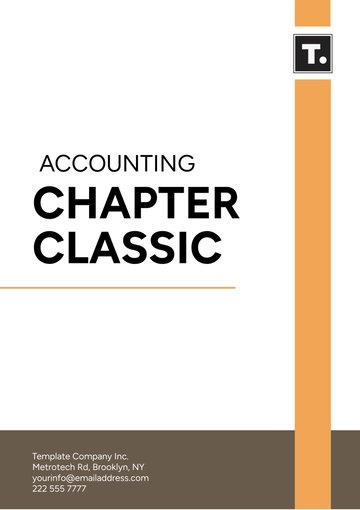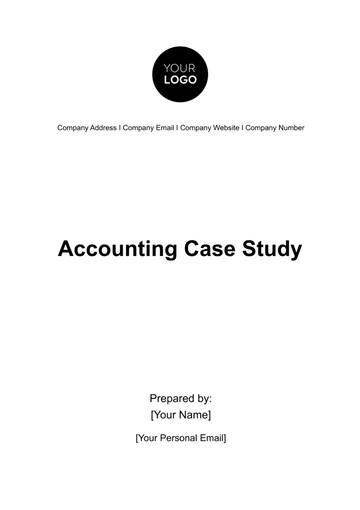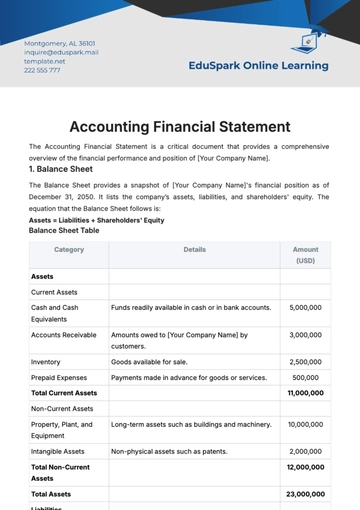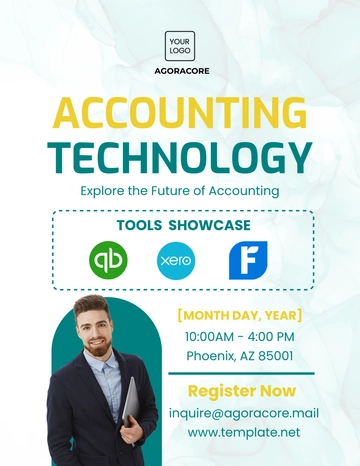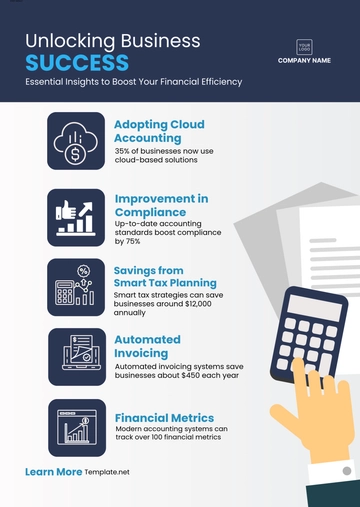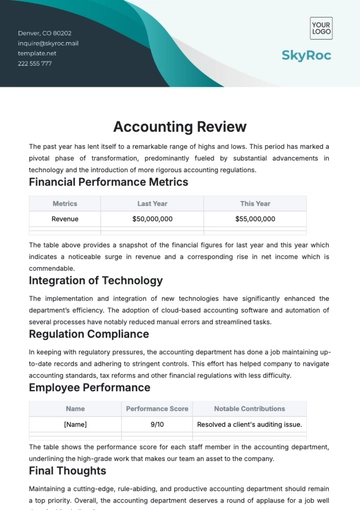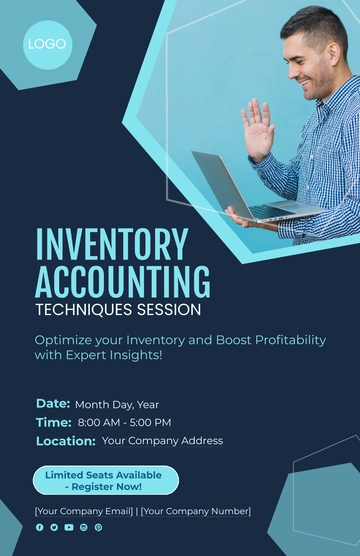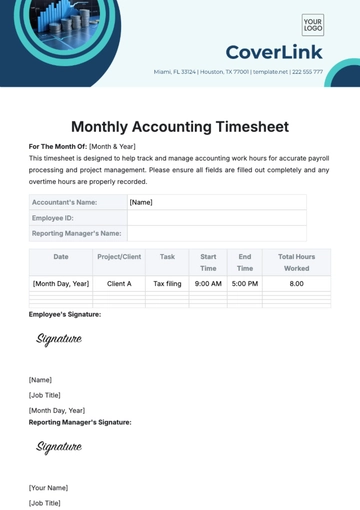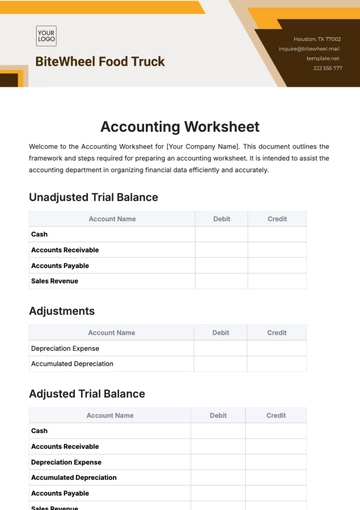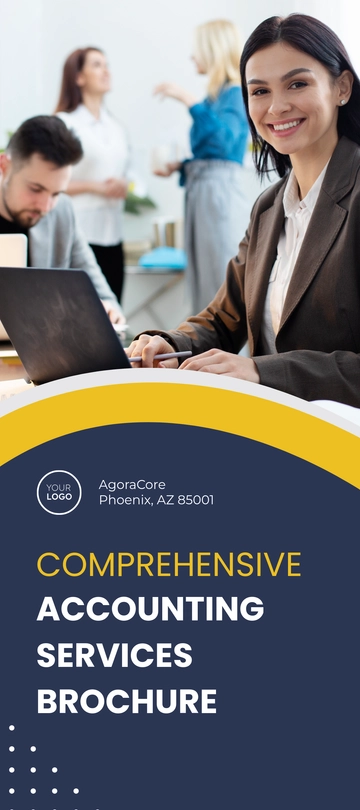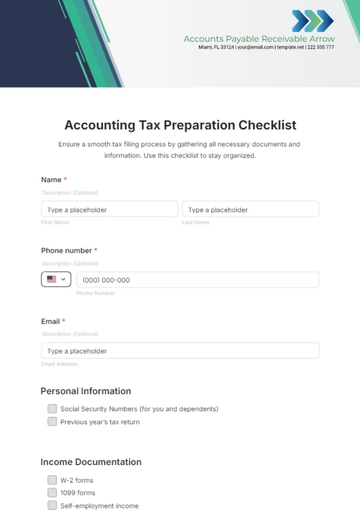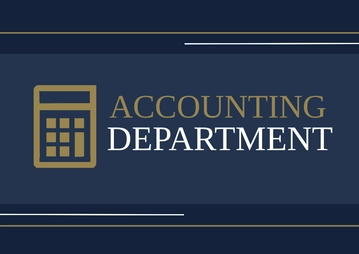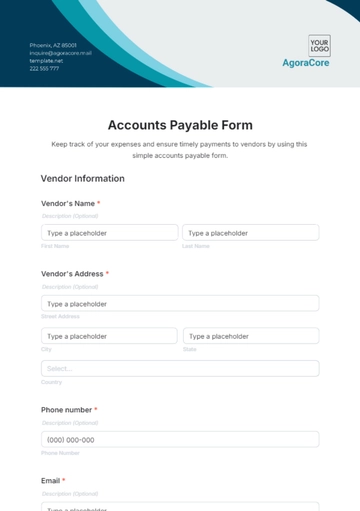Free Accounting Asset Management System Feasibility Study
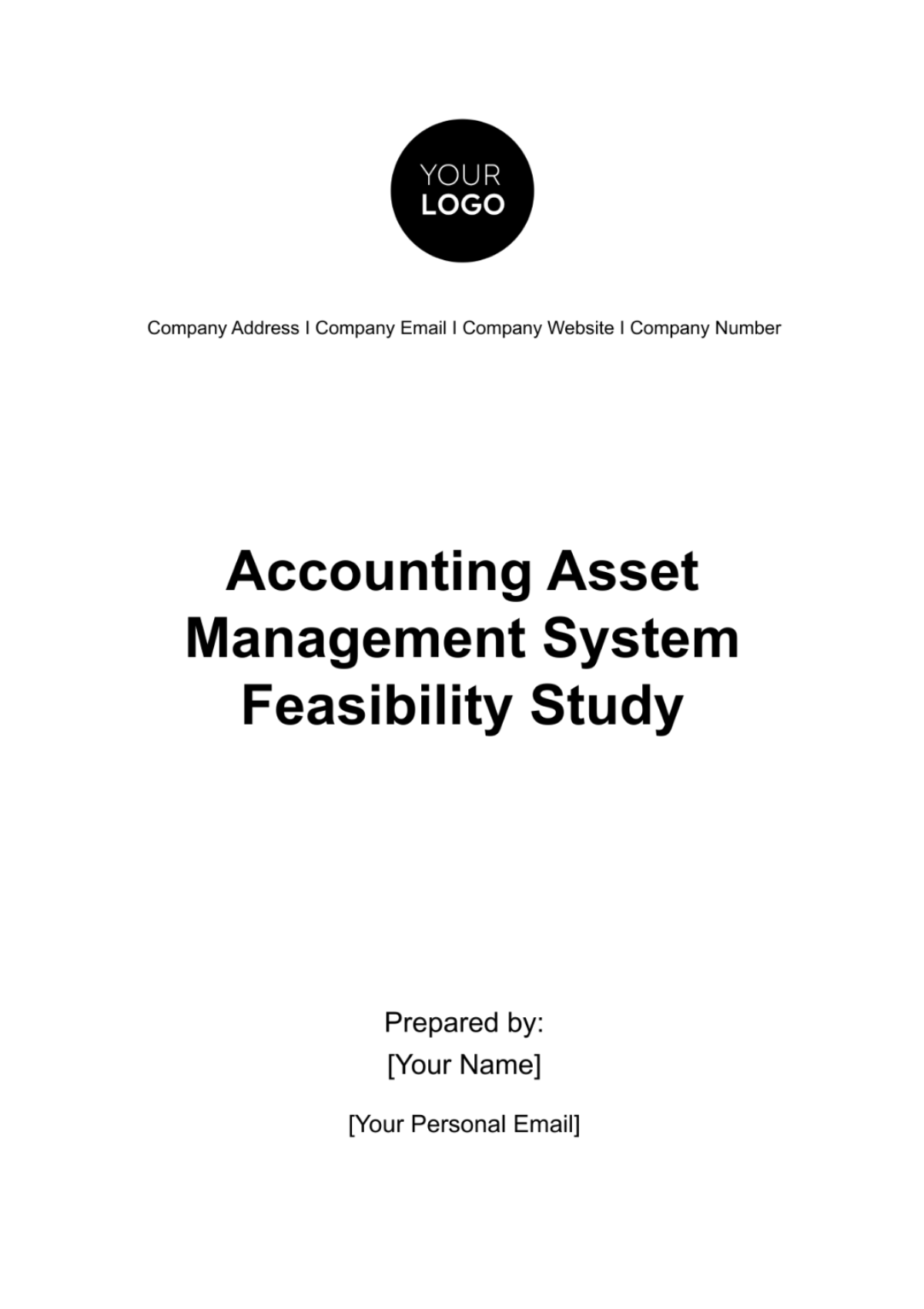
I. Executive Summary
The executive summary provides a succinct overview of the feasibility study. Following a comprehensive analysis, it is evident that implementing an Accounting Asset Management System at [Your Company Name] is both strategically and financially advantageous. The study reveals potential cost savings of 15% annually, coupled with an estimated ROI of 25% within the first two years. The proposed system addresses critical weaknesses in the current asset management processes and aligns with the company's long-term goals of improving operational efficiency and financial accuracy.
II. Introduction
[Your Company Name], a leading provider of innovative solutions in the healthcare industry, is conducting this feasibility study to explore the implementation of an Accounting Asset Management System. The study aims to evaluate the organization's current asset management practices, identify specific needs and requirements, and determine the technical and financial feasibility of adopting a new system. The scope includes assets such as medical equipment, IT infrastructure, and office facilities. While the study acknowledges the potential challenges, it also emphasizes the transformative benefits that an efficient asset management system can bring to [Your Company Name]'s operations.
III. Current State Analysis
The latest analysis of the current state of [Your Company Name] underscores a heavy reliance on manual tracking systems and a disconnected series of spreadsheets for the management of their assets. This mode of operation has paved the way for a series of challenges, such as inconsistencies in data compilation and lengthy reporting times, which consequently increase the chances of errors infiltrating the system. A critical element exacerbating these issues is the evident absence of integration across the myriad departments within the company. This dearth of seamless interfacing has proven to be a significant hindrance to fluid communication and collaboration, which are essential for efficient business operation. Nevertheless, in spite of these noted challenges, the analysis draws attention to the resilient commitment of the asset management team towards ensuring the ongoing accuracy of financial records. This overarching dedication shines as a beacon of hope amidst the otherwise bleak findings.
IV. Needs Assessment
In the process of identifying key requirements for the new system, stakeholder interviews and surveys were conducted across several departments including finance, IT, and operations. Each department highlighted specific aspects they deemed to be of paramount importance. The team from the finance department, for example, emphasized how crucial it was for the new system to have real-time reporting capabilities. This, they posited, would enhance efficiency and real-time decision-making process. Similarly, the IT department indicated that for the system to work optimally, it needed to seamlessly integrate with the existing infrastructure. They opined that this would not only promote system consistency but also mitigate potential system hiccups that could arise from poor integration.
On their part, operations personnel expressed their need for a user-friendly interface. The user-friendliness, they noted, should be in such a way as to simplify the process of asset tracking and maintenance schedules. This, they suggested, would streamline operations and enhance productivity.
Given the feedback from these departments, the requirements for the new system were subsequently prioritized. Among the top-rated requirements included the need for centralized asset data. This was considered key for the consistency of data and ease of access. Also on the priority list was the requirement for automated depreciation calculations which was thought to be crucial for efficient management of assets. Added to these was the need for customizable reporting features. This feature was deemed important since it would allow for adjustments to be made according to specific needs and thus, enhance system effectiveness.
V. Technical Feasibility
The assessment conducted to determine the technical feasibility of the planned implementation has confirmed that the extant IT infrastructure of the [Your Company Name] is technologically capable and adequately equipped to provide support for the proposed Accounting Asset Management System. The testing that was carried out to check for compatibility with the company's current software and hardware demonstrated an absence of conflicts and revealed prospects for a seamless integration process that will be devoid of system disruptions. Further, there has been validation of the system's capacity to scale up as required, suggesting that it is well-equipped to cater to the company's future expansion plans without running into problems or becoming obsolete ahead of its time. The implication is that the Accounting Asset Management System can respond effectively to the growing needs of the company. The security assessments were rigid and thorough, and they unarguably revealed that there will be the implementation of leading-edge data encryption measures and strict access controls. The aim is to comply with the defining standards in the industry and to adopt the optimal security measures. Importantly, the goal is also to secure and protect sensitive information to avert the possibilities of unauthorized access, breaches, or leaks, which can pose threats to the organization's operation or compromise the integrity of processed data.
VI. Financial Analysis
The financial analysis estimates the total cost of implementing the Accounting Asset Management System at $350,000, with an expected annual savings of $50,000 due to increased operational efficiency and reduced errors. The ROI is projected to reach 18% in the first three years. The cost breakdown includes software licensing ($120,000), hardware upgrades ($60,000), implementation services ($120,000), and training ($50,000). These figures are based on consultations with vendors, industry benchmarks, and a thorough assessment of the organization's specific needs.
Cost Component | Amount ($) |
|---|---|
Software Licensing | 120,000 |
Hardware Upgrades | 60,000 |
Implementation Services | 120,000 |
Training | 50,000 |
Total Cost | 350,000 |
VII. Risk Assessment
The process of risk assessment is instrumental in effectively identifying the scope of potential challenges that may come into play. These challenges may present themselves in various forms, such as potential breaches in data security, dispositional resistance to the adaptation or implementation of new changes, technical difficulties, or issues that may be experienced during the execution or implementation phase. In order to address this, a comprehensive and meticulously detailed risk register has been prepared. The purpose of this register is to provide a thorough outline depicting the possible impact each identified risk may have. It also sheds light on the probability or likelihood of the occurrence's risk along with effective strategies intended for mitigation for every risk identified therein. The strategies outlined within the risk register come with specific examples. For instance, to counteract the risk involved with possible data security breaches, the strategic approach proposed is the implementation of robust encryption protocols. These will ensure the secure transmission and storage of data. In addition, to further enhance and ensure data security, we recommend undertaking regular security audits. This will not only identify any loopholes but also serve as a reassurance measure.
Resistance from various stakeholders is another risk that has been identified. This often stems from the concept of change which tends to be naturally resisted by most individuals. We propose addressing such resistance by using a comprehensive plan for managing the change. This will include strategies targeted at educating individuals to understand, adapt, and finally implement the change. For this, we suggest utilizing various training programs that provide information and familiarization with new operations and processes. Alongside training programs, the change management plan also underscores the importance of communication strategies that keep all stakeholders informed and engaged.
VIII. Alternative Solutions
During the process of assessing different viable strategies, several alternative solutions surfaced. One of these included upgrading the systems that were already in place and had been used by the company so far. Another alternative that was considered was the outsourcing of asset management to an external party. Both these options were evaluated in light of the specific requirements that were identified and articulated during the interviews held with various stakeholders who are integral to the business process. Despite being plausible solutions on the surface, these options didn't fully address the unique needs that were identified earlier. For example, by choosing to upgrade the existing systems, the organization would be unable to attain the level of integration and customization that was perceived as necessary for seamless operation. Similarly, if the company decided to outsource its asset management, it would inevitably give up a degree of control over its sensitive asset data, which might be detrimental in the long run.
In light of these findings, a proposed option that saw the introduction of a new Accounting Asset Management System took center stage. The potential benefits of this system and its holistic alignment with the overarching organizational goals gave it precedence over the others. Conclusively, the said system stood out as the most viable and effective solution, effectively tackling the set goals and objectives.
IX. Recommendations
Having conducted a comprehensive analysis, our recommendation for [Your Company Name] is to go ahead with the implementation of the Accounting Asset Management System. There are several benefits associated with the proposed system which makes it a worthwhile investment despite the initial costs. These benefits encompass an increase in operational efficiency which is crucial for any business, an improvement in the accuracy of financial operations and an enhancement of regulatory compliance. By ensuring all these aspects of the company's operations are well-managed, the Accounting Asset Management System provides significant value. Furthermore, the proposed system is in line with the strategic objectives of the company. By adopting it, [Your Company Name] would not only uphold its current business goals but also position itself for sustained growth and heightened competitiveness in the future. The system's integration will allow [Your Company Name] to stay abreast of industry changes and adapt to new business environments, thereby ensuring its long-term survival and success.
X. Implementation Plan
The high-level implementation plan is a detailed overview that marks out necessary key milestones expected to be reached within a full year, otherwise known as a 12-month timeline. The first quarter of the plan, or the initial three months, is centered around the crucial task of vendor selection along with the equally significant process of detailed requirements gathering for the business. Following this, the plan then moves into its next phase which spans six months. During this time, the concentration is on the customization of systems to suit the requirements of the business, extensive testing to ensure system reliability, and preparations for training personnel who will operate and manage these systems. After these processes are satisfactorily complete, the plan moves into its final phase which will last for the remaining three months of the year. This period is chiefly dedicated to deploying the system into the operational environment of the business. Post-implementation support is also provided during this time to ensure smooth operation and any necessary adjustments can be made. Further, continuous improvement assessments are carried out to gauge the efficiency of the system and make improvements where necessary.
XI. Conclusion
In conclusion, the purpose of this feasibility study is to provide an in-depth and comprehensive understanding of all the potential benefits and possible challenges that are likely to be encountered when implementing an Accounting Asset Management System at [Your Company Name]. It explains in detail how this proposed system can align strategically with the company's business objectives, and offers a cost-effective solution to managing the company's assets. Additionally, it delves into the potential transformative impact it can have on improving operational efficiency within the organization. All these factors collectively position the proposed Accounting Asset Management System as a potentially valuable investment that [Your Company Name] can consider to further enhance and streamline its business operations.
- 100% Customizable, free editor
- Access 1 Million+ Templates, photo’s & graphics
- Download or share as a template
- Click and replace photos, graphics, text, backgrounds
- Resize, crop, AI write & more
- Access advanced editor
Explore the comprehensive Accounting Asset Management System Feasibility Study Template at Template.net. It's not just editable but also fully customizable using our intuitive AI Editor Tool. Crafted by experts, this template empowers you to streamline decision-making, ensuring a seamless analysis and actionable recommendations. Unleash the full potential of your organization with our premium, user-friendly template.





